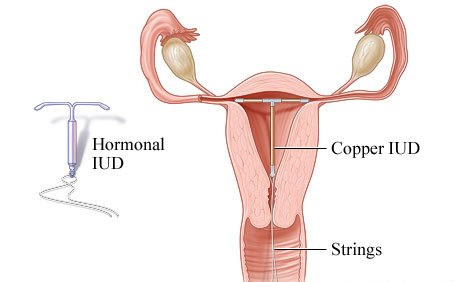The IUD (intrauterine device) is one of many contraceptive methods available today. It is a T-shaped device which is inserted into the uterus in order to prevent the sperm from reaching the eggs. Women prefer IUD because it offers protection for a long period of time, between 3 to 12 years depending on the type you choose. Anytime you decide to get pregnant, you can just remove the IUD. However, some women report bleeding after having IUD insertion.

Is It Normal to Have Bleeding After IUD Insertion?
It is normal to experience some spotting or bleeding after the IUD insertion. The adjusting period lasts about three to six months. Spotting and vaginal bleeding during these months are considered normal, especially during the first month after IUD insertion. However, it is also normal not to spot or have vaginal bleeding after insertion. You can just consider yourself as a lucky one and there is no need to worry about. Bed rest and over-the-counter painkillers will be enough during the first couple of days.
When to See a Doctor
Any excessive spotting or vaginal bleeding which is not getting better and even tends to get worse requires medical attention. There is always a risk of certain complications during and after IUD insertion such as injuries of the uterus, infections, etc.
Seek immediate medical help if:
- You have severe bleeding which tends to get worse.
- The pain is not getting better or is worsening.
- You are having a high fever, abdominal cramping, and other signs and symptoms.
Even if the bleeding after IUD insertion and other symptoms resolve within a couple of days, you would still want to make an appointment with your doctor and make sure that everything is right and that the IUD is still in its place.
Note
A good thing to know and always consider is the fact that IUD doesn’t provide protection against sexually transmitted diseases. IUD is a good contraceptive method; however, during sexual intercourse, further protection against sexually transmitted diseases is required. Don’t forget to use condoms for this purpose.
Other Women's Experience
I have inserted the IUD about a month ago and so far everything seems OK. I had a little spotting during the entire month, but nothing really to worry about. It seems that the bleeding is getting better now. A friend of mine, who also had an IUD inserted, had bleeding for about two months. Be aware that bleeding can last for about six months.
I have mine inserted about 5 years ago and until today I had no problem at all. However, during the first 6 months, I had abdominal cramping and bleeding after IUD insertion. I took ibuprofen for pain, and the bleeding got better with time. Eventually, both the cramping and bleeding went away.
How to Manage Other Side Effects of IUD
Bleeding is not the only side effect of IUD. Other possible side effects include:
1. Heavy Menstrual Periods
Heavy menstrual periods are possible after IUD insertion. In general, there is nothing to worry about. Seek medical help in cases when heavy and prolonged bleeding lasts longer than 6 months, if the bleeding starts again after a couple of months from an IUD insertion, or if other signs and symptoms accompany heavy bleeding.
During the heavy menstruation period, use iron supplements which will help you prevent anemia. Over-the-counter painkillers will also provide you a short-term relief.
2. Irregular Menstrual Periods
Irregular menstrual periods are normal after IUD insertion. Remember that irregular menstrual period is not harmful and tends to become regular after a couple of months. If irregular menstrual periods continue for a longer period than 6 months after IUD insertion, or if they tend to occur after a couple of months after IUD insertion, there might be other underlying conditions unrelated to IUD insertion. Consult your doctor in these cases.
3. Abdominal Cramping and Pain
Besides bleeding after IUD insertion, abdominal cramping and abdominal pain are also considered normal during the first couple of days. Sometimes, cramping and pain last for about 6 months, especially during menstrual periods. In general, abdominal cramping and abdominal pain tend to resolve with time.
If abdominal cramping and pain continue to occur outside of monthly menstrual periods, other possible causes should be considered and further examinations might be necessary. If no other cause is discovered and the cramping is still severe, consider removing the IUD.
4. Perforation of the Uterus
If your doctor suspects a uterus perforation during the insertion procedure of the IUD, he/she will stop the procedure immediately. Your doctor will observe you closely during the first couple of hours and check for the vital signs and any signs of intra-abdominal bleeding.
If perforation of the uterus is suspected in the first few months after insertion or later, your condition will be closely examined. Your IUD may be removed in severe cases.
5. Complete or Partial Expulsion of the IUD
A complete or partial expulsion of the IUD is also possible. A complete expulsion of the IUD is when the IUD totally comes out. If this occurs, further examinations such as X-ray and ultrasounds are needed in order to look whether the IUD has moved to the abdominal cavity. A backup contraceptive method is required in the meantime.
A partial expulsion of the IUD is when it partially comes out. If you want another IUD inserted, first exclude a pregnancy. If not, make sure to use other contraceptive methods.
